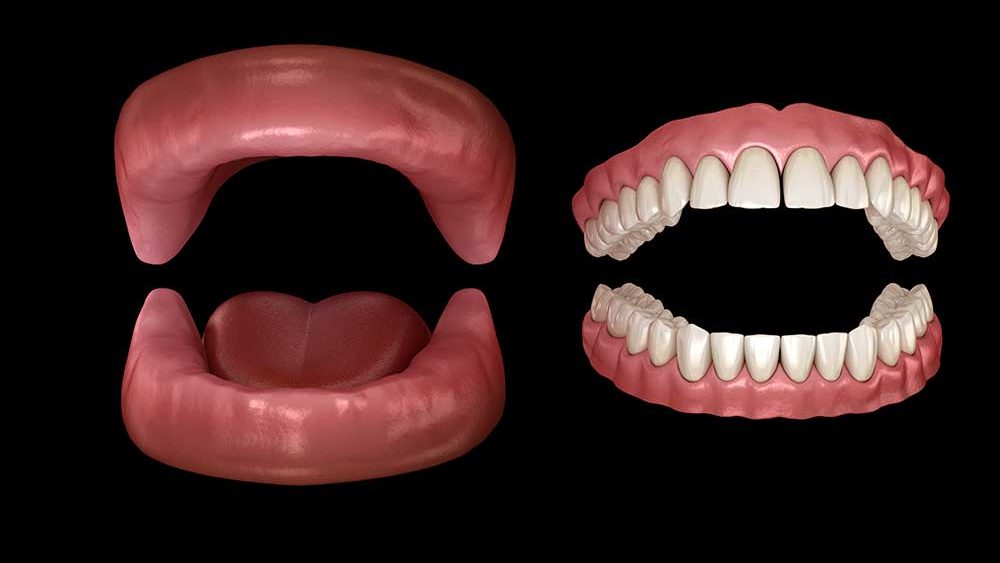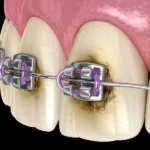Recent Posts
What Is A Dental Flipper?

A great smile gives people confidence in their ability to reach their personal goals in life. People get affected by this due to an accident or other dental issues. They’re often left feeling ashamed and embarrassed by the appearance of holes in their smile. One available solution to restore a person’s smile is the placement of a dental flipper is a temporary treatment. Dental implants and implant-supported dentures are more permanent treatment to restore your smile.
Table of Contents
What is dental flippers?
A dental flipper is a removable retainer fitted with false teeth. It’s made up of a denture acrylic colored to match a patient’s gums. Some get fitted with clasps that go around the patient’s permanent teeth to hold them in place better.
Dentists often choose to place a dental flipper in a patient’s mouth as a temporary measure, allowing them to heal from surgeries such as extractions or grafts while hiding any gaps. This choice works well as an alternative for patients too young for dental implants or other extensive surgery. These patients wear a dental flipper until the dentist determines that the patient’s jaw has matured enough to consider more permanent dental solutions.
People lacking the resources to afford more expensive surgery often choose a dental flipper as a cost-effective long-term option.
What’s involved in getting a dental flipper?
The dentist first takes impressions of the patient’s mouth to get an accurate representation of what the dental flipper needs to accommodate. That impression gets cast in plaster and sent off to a dental laboratory. The dentist also sends instructions directing the laboratory on what color the teeth should be and other factors unique to the patient’s mouth. The laboratory uses that dental impression along with those guidelines to model the new dental flipper.
The cost of the dental flipper depends on the number of teeth being added. A dental flipper with metal clasps cost more than those without. The amount paid for a dental flipper ranges from $300 to $500.
What are the benefits of having dental flippers?
Flipper teeth can be placed right away to fill in any gaps due to injury or dental disease. It’s capable of being prepared in advance when it’s known that one or more teeth require extraction from a patient’s mouth. That means the patient never suffers from publicly exposing their missing teeth. A dental flipper gets chosen more often as a temporary dental solution because it’s found to be better-looking than other provisional alternatives. The lightweight material makes it easier for patients to adjust to having it in their mouths. Getting one made takes less time than other solutions and requires fewer office visits.
A dental flipper provides stability for permanent teeth around the spaces in a patient’s mouth, preventing them from moving around to fill them. They also make eating and chewing easier and more comfortable for patients. Patients suffering from additional tooth loss after getting a dental flipper can have it modified quickly to accommodate the new openings.
How do you take care of dental flippers?
A dental flipper should be removed and gently brushed every night. The ADA recommends that a mild solution similar to hand soap be used for cleansing as toothpaste is often too harsh. Patients need to be very careful while cleaning to avoid accidental breakage. Patients should avoid sleeping in flipper teeth to prevent the build-up of bacteria harmful to the patient’s oral health. Patients should let their dental flipper soak overnight in water containing an antifungal and antibacterial tablet.
Patients should visit their dentist at least twice a year or as often as needed to ensure that their dental flipper gets adjusted if they’re causing the patient discomfort.
What are the drawbacks to having flipper teeth?
Flipper teeth might break easily due to the lightweight nature of the material used to create them. Patients must go without their appliance until it’s repaired at a dental laboratory. A dental flipper requiring more visible dental clasps make it obvious where a patient has teeth missing. It’s difficult for saliva to cleanse a patient’s gums since the dental flipper covers them up. This combined with failing to care for the flipper properly leads to tooth decay and gum disease.
Most flipper teeth loosen over time, irritating the patient when they’re worn. A loose-fitting dental flipper rubbing against the gums increase the possibility of bone loss in the affected areas.
February 15, 2023What Is The Average Cost Of Braces In Houston?
February 01, 2023What You Need to Know About Dental Hygienists?
January 30, 2023What to Expect During the Wisdom Teeth Extraction
October 23, 2022Wisdom Tooth Removal Cost
October 23, 2022Dental Emergency, Open Saturday
October 23, 2022Full Guide to Dental Crown
July 26, 2022Should I Have My Wisdom Teeth Removed Before I Get Braces?
July 26, 2022Complete Guide to Wisdom Tooth Removal





